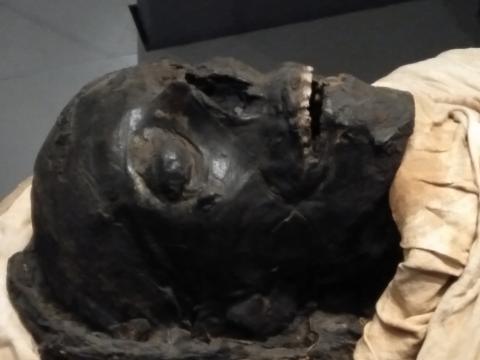Padi-amun

This is the mummy of Padi-amun, which is housed at Liverpool. His grave goods described him as ‘the captain’, referring to military rank and he died in his early twenties of an unknown cause. During embalment, his brain and internal organs were removed, and his body was coated with natron salt to cleanse and dry it. It was then covered with a balm made of animal fats, plant oils, beeswax and a small amount of coniferous tree resin. These ingredients sealed the body and slowed down decomposition. Padi-amun's bandages were removed in 1851 and he was partially rewrapped in the 1970s.
Dating to the third Intermediate Period (about 747-600 BC), he may have been a contemporary of the prophet Isaiah or Judah's King Josiah. The latter was defeated by an Egyptian army in 2 Kings 23:29:
In his days Pharaoh Necho king of Egypt went to the aid of the king of Assyria, to the River Euphrates; and King Josiah went against him. And Pharaoh Necho killed him at Megiddo when he confronted him.
While Isaiah, alongside the pronouncement of judgement on Egypt, makes the following, remarkable claim in 19:21:
Then the Lord will be known to Egypt, and the Egyptians will know the Lord in that day, and will make sacrifice and offering; yes, they will make a vow to the Lord and perform it.
Whether our friend Padi-amun was a captain of Necho’s army, or whether he knew of the Hebrew prophet’s wonderful message of hope concerning his land, we do not know. That soulless body yields no more secrets, while somewhere, a bodyless spirit awaits God’s judgement: let us hope that he knew of the Lord, the God of Abraham, in his day, who purchased all who come to Him, believing.

- Log in to post comments


 Sunday Worship 10.45am & 6.00pm
Sunday Worship 10.45am & 6.00pm